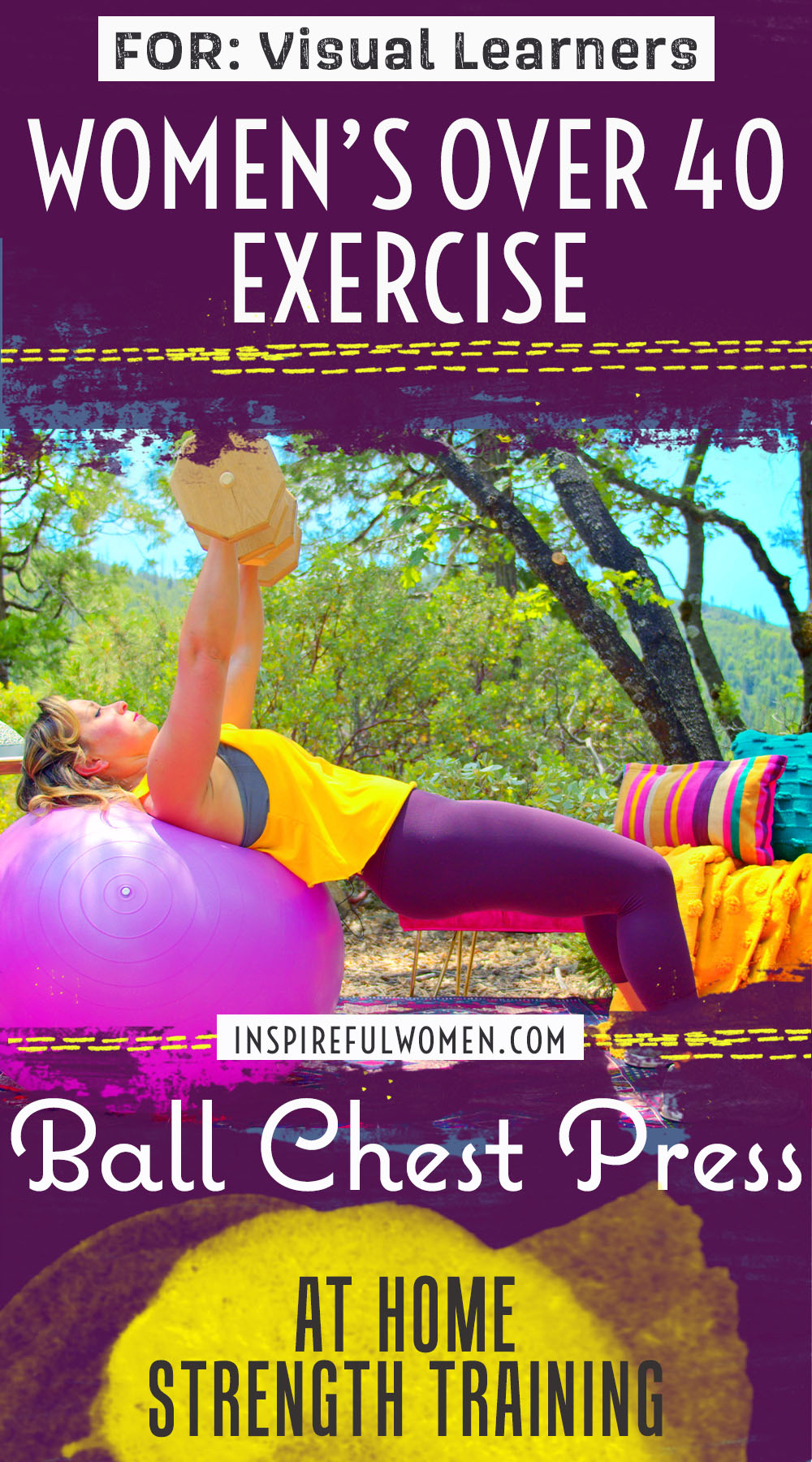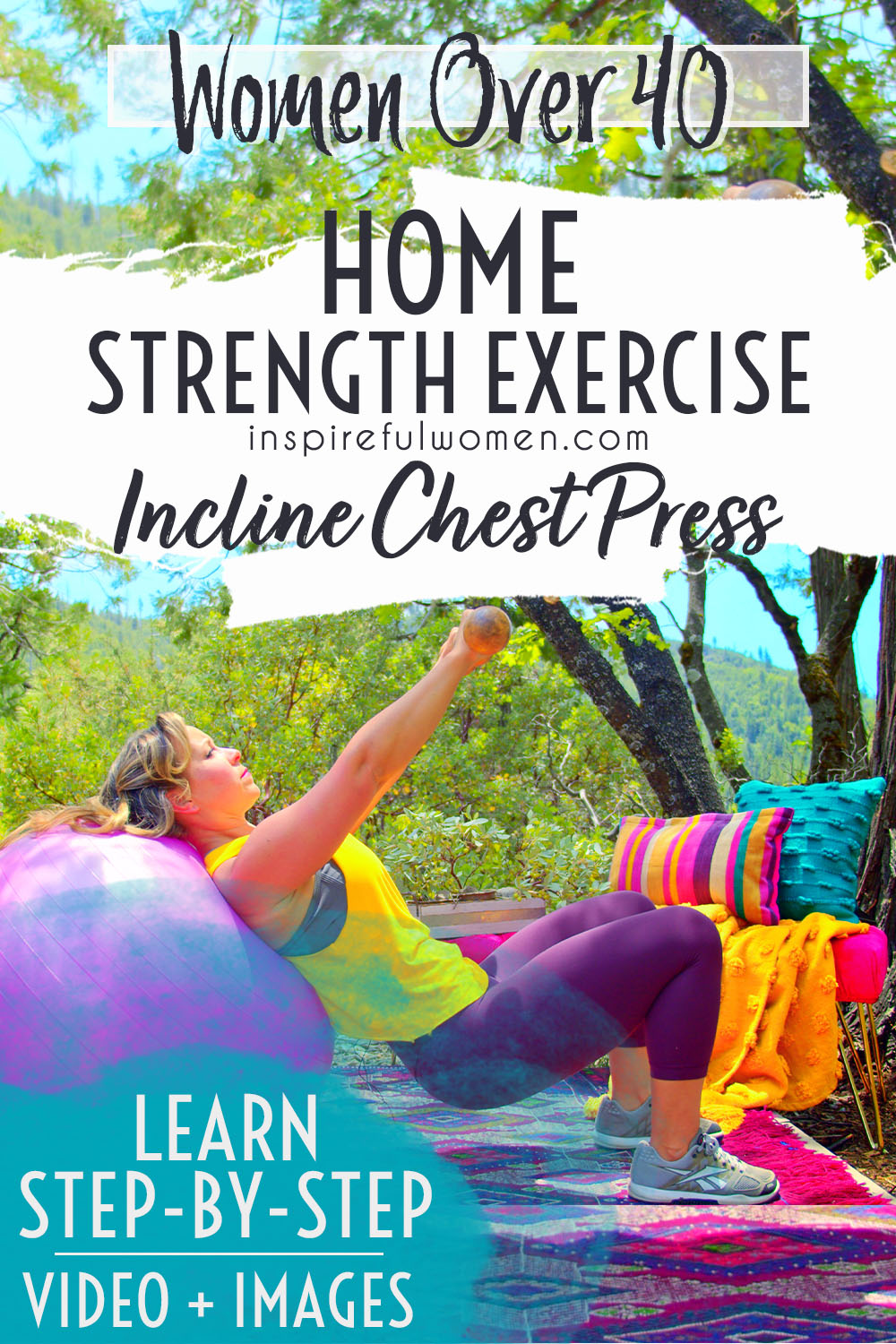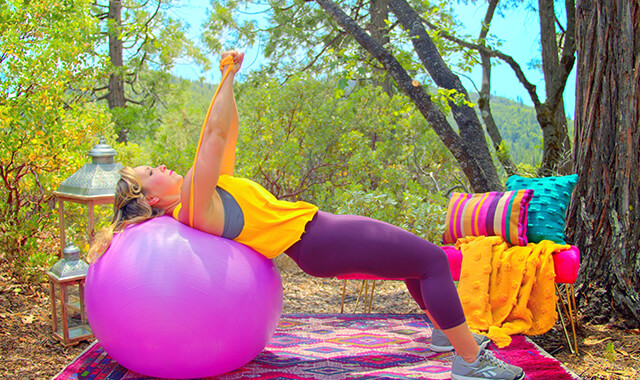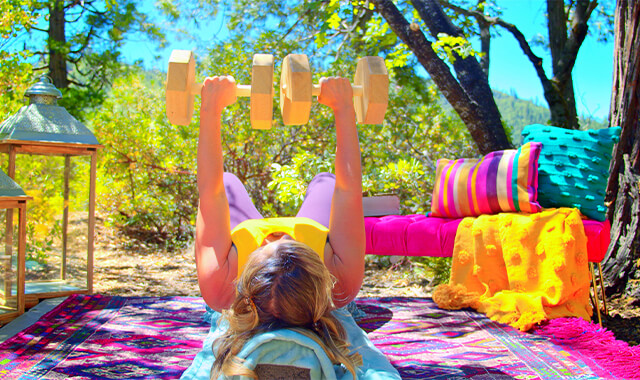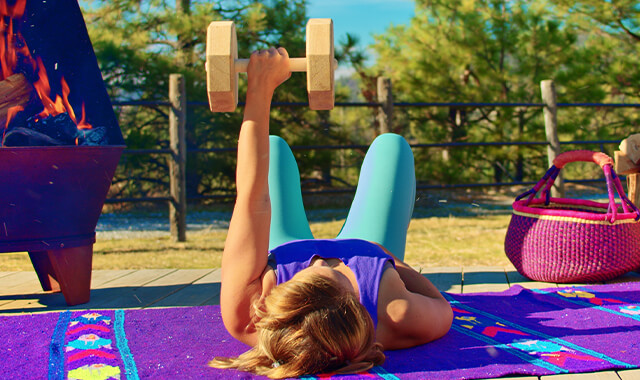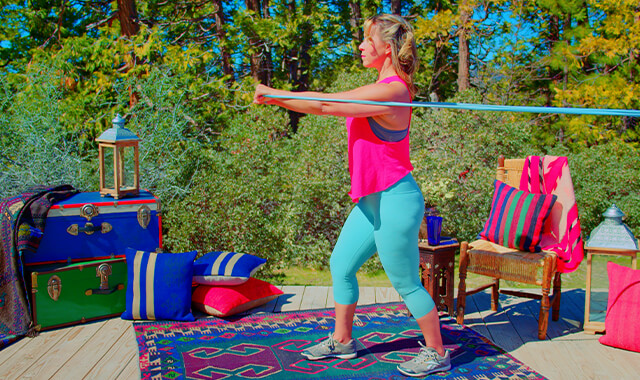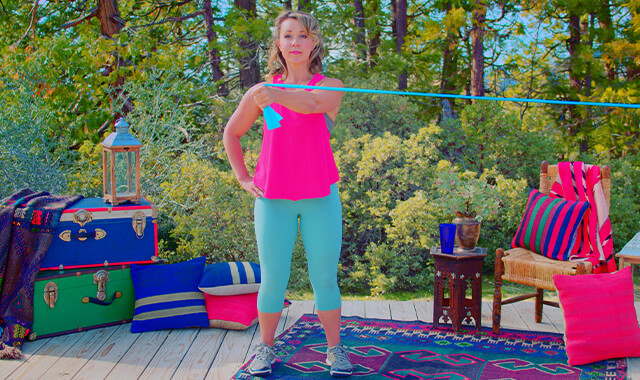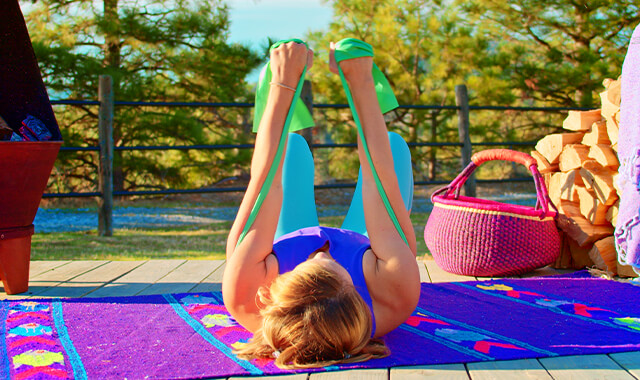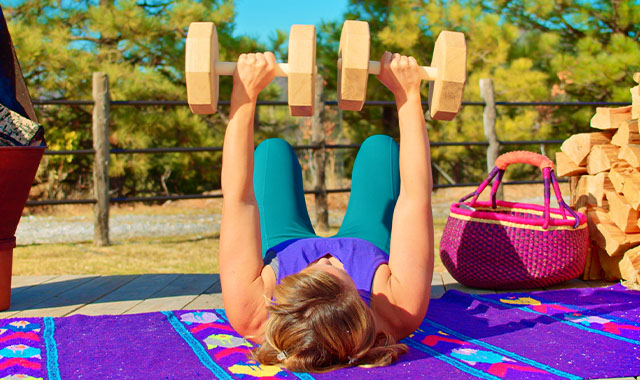Dumbbell Stability Ball Chest Press
How to Do the Inclined Dumbbell Chest Press on Ball | In-Depth Guide [VISUAL LEARNERS] Beginner
Proper Form, Common Mistakes, & Variations | Home Resistance Training
WHAT DO YOU WANT TO SEE?
QUICK DEMO
QUICK DEMO
MUSCLES THIS WORKS
MUSCLES
MAIN MUSCLES WORKED IN the Inclined Dumbbell Chest Press on ball
Pectoralis Major
OTHER MUSCLES WORKED:
- Anterior deltoid
- Coracobrachialis
- Triceps
- Biceps
STARTING POINTERS
Starting Pointers
WHAT WE'RE DOING TODAY
ALL WE'RE DOING:
Laying on a stability ball under your back, press up your hand above you.
The inclined dumbbell chest press on ball targets the chest muscles while also engaging the core muscles for stability. This incline chest press variation is done with your upper back and head supported by a stability ball. The muscles of the lower back, pelvis, hips, and legs will have to work pretty hard to hold you in the position. This position will work your core and leg muscles as you strengthen your arms. It is pretty much like holding a hip thrust or bridge position during the entire chest press set.
Benefits include building chest strength, engaging core muscles, improving balance and coordination, increasing range of motion, and boosting metabolism.
The shape of the ball makes it easy to change your position for comfort and to mimic an inclined bench - so you can easily target the upper fibers of the pec muscles - see variations below. The shape of the ball also allows for the elbows to travel behind the torso for a larger range of movement but will limit the ability to travel too far (unlike using a bench where there is no limit).
HOW TO DO THE EXERCISE
LOOKS
HOW Dumbbell Ball Chest Presses SHAPE OUR BODY
Defined chest muscles.
PROPER FORM
PROPER FORM: Incline Dumbbell Chest Press on Ball
EQUIPMENT, SETS & REPS
EQUIPMENT
Stability Ball
SUGGESTED STARTING WEIGHT FOR WOMEN:
10 - 14 lbs.
SETS & REPS:
2 sets of 8 reps
PACE:
Can be quicker up and slow controlled down.
BODY POSITION
BODY POSITION FOR THE Dumbbell Ball Chest Press
Place the ball on the floor. Holding one weight in each hand, sit on the ball. Place the dumbbells in the creases of your hips. Walk your feet out as you roll back on to the ball. Walk out until your head and upper back are supported on the ball. Move weights up to the chest.
BODY STANCE: Pressing your feet down to the floor, lift your pelvis up until your hips are in line with your shoulders and your spine is in a neutral position. Stabilize your upper body by pulling your shoulder blades in and down your back. This provides a good stable base to work off of. This movement should not feel gripping or tight, just stable. This becomes more important as the weight you are using increases, the intent is to have the weight on your shoulder blades as opposed to the more flexible - and smaller bones of the rib cage. Your shoulders should be pressed back in contact with the ball - the chest open.
ARMS: Lift the weights off of your chest by moving your hands out so that they are almost over your elbows. Your upper arms should be about halfway between straight down to your sides and at shoulder level. Lower your elbows behind you until the weights gently touch your chest.
HOW TO DO
HOW TO DO Dumbbell Chest Presses on Ball
CUE: Your leg muscles will be very active to hold the position.
Press the dumbbells straight towards the ceiling.
Your upper arms move in so that it ends up in line with the front of your shoulder or a bit further so your hand is lined up with the middle of your collar bone.
As your arm moves in, your elbows straighten.
The ends of the dumbbells can be close together at the end of the movement.
Squeeze your pec at the end/top of the movement.
Slowly return to the starting position by bending your elbows and moving your arms back out to the side.
Repeat to complete the reps.
HOW TO SAFELY GET OUT OF THE EXERCISE
Be careful when getting up with the weights down. Bend your elbows and rest the weights on the chest, move them down to the crease of your hips. Walk feet in towards the ball as you curl your spine (starting at the head begin to roll up) into sitting on the ball.
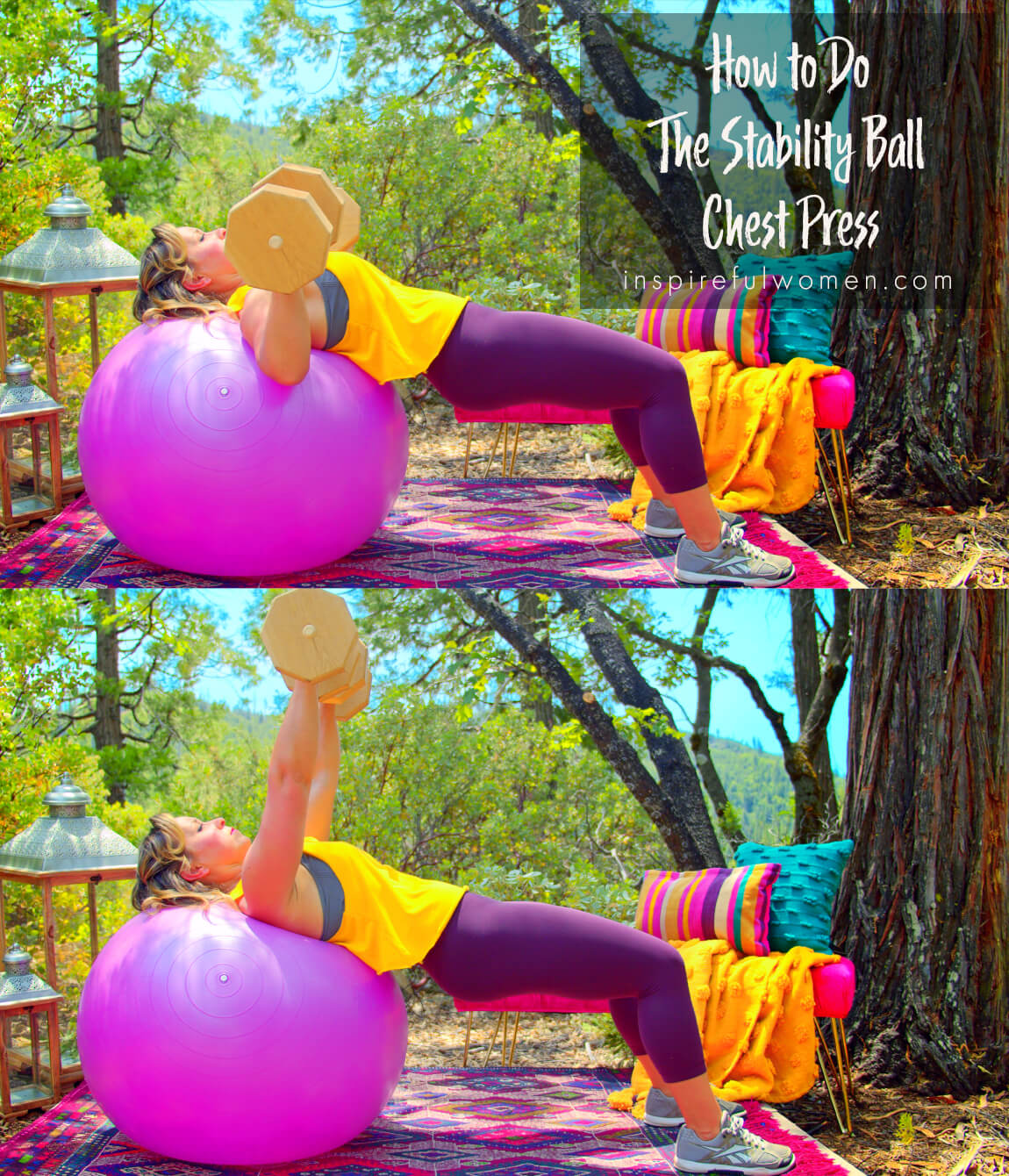
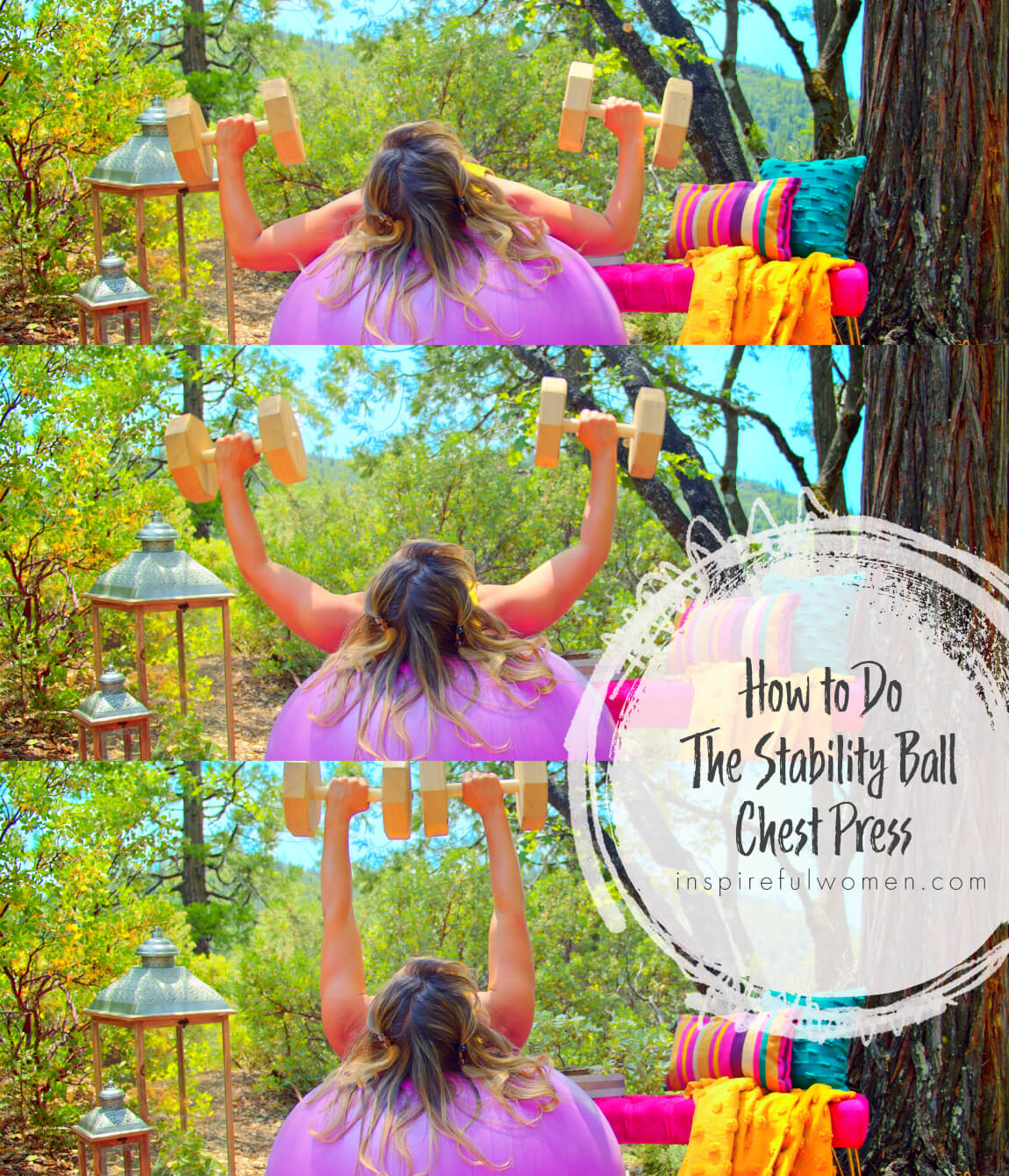
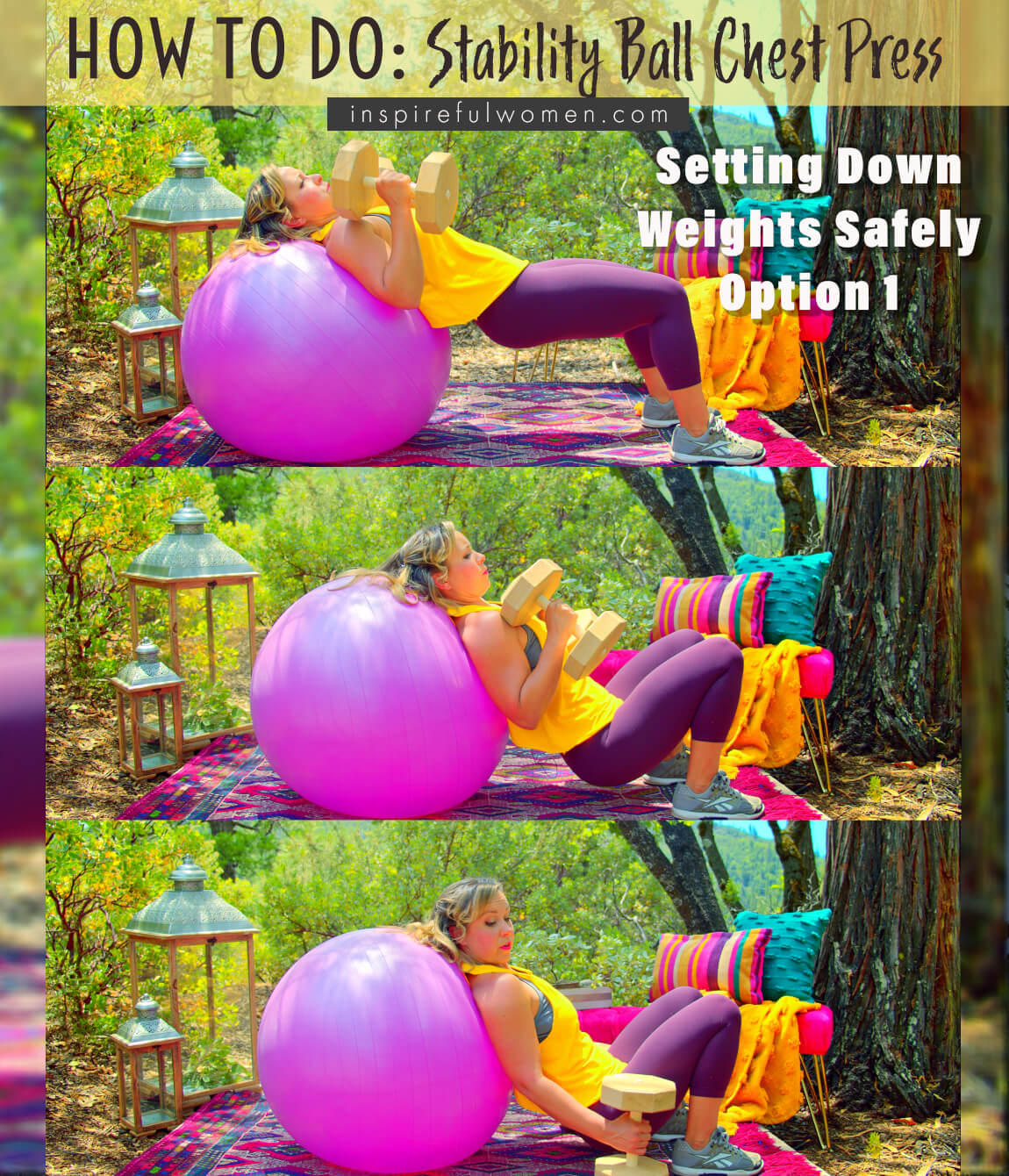
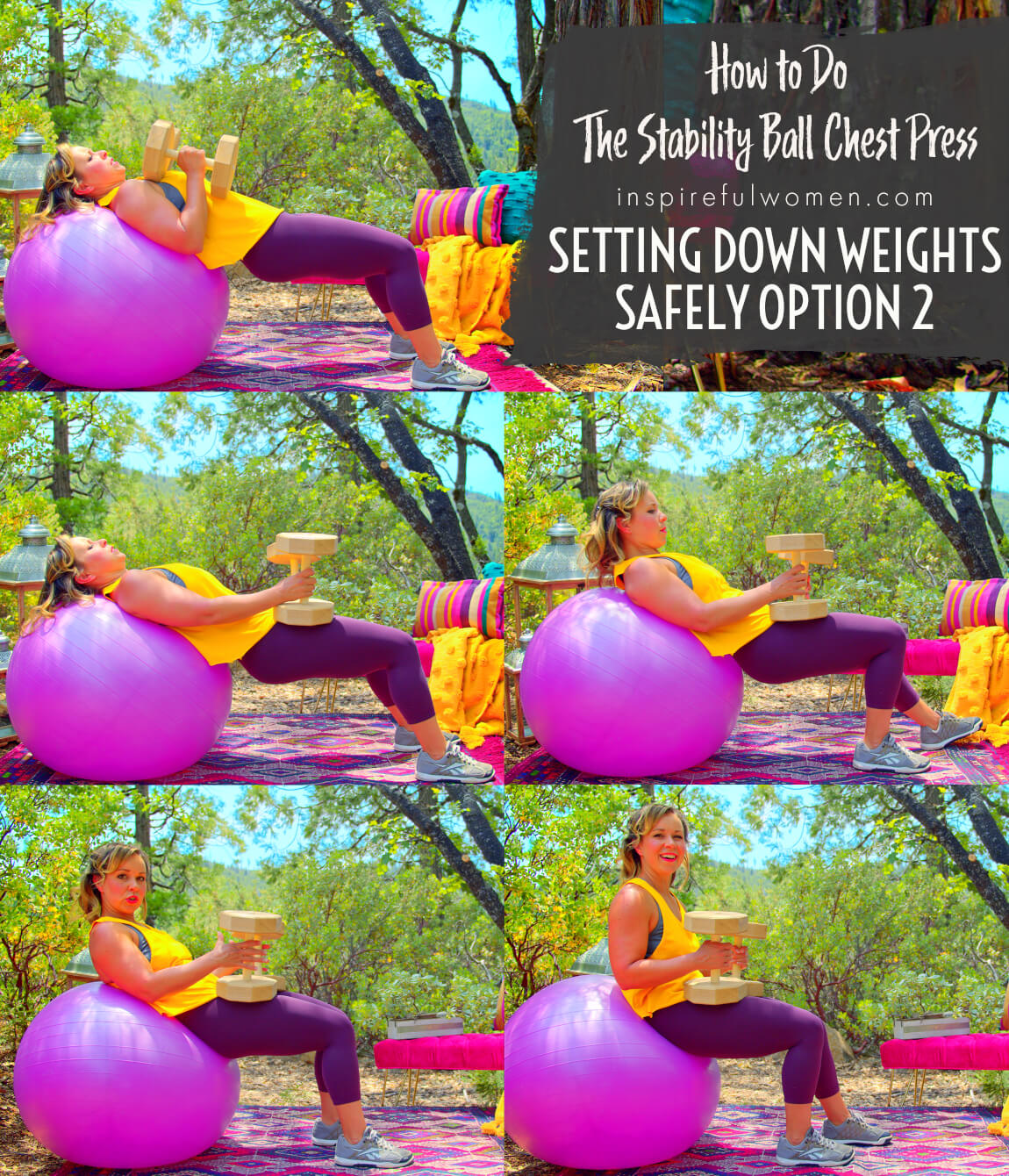
COMMON MISTAKES
COMMON MISTAKES
WHAT TO AVOID WITH THE Incline Dumbbell Chest Press on Ball
KEY TIP:
Guess what? Good news! Many avoids are the same for most movements. Once you learn the basics, there's really only a few extra avoids for each individual movement.
1. Avoid Arching Low Back
AVOID: Arching your low back.
WHY NOT?
- Maintain a neutral spine position to prevent low back joint injury, muscle strain or damage over time.
WHAT TO DO:
- If your ribs are lower, ribs flare upwards, or your belly is lifted up - this indicates you are arching your low back. Your pubic bone and front hip bones should be in one plane - you can check by placing fingertips on your pubic bone and set the base of your palm on hip bones - your hand should be flat.
- This can happen because you are taking the arms up too far overhead.
- move arms down, they should be mid-chest level, the hands below the shoulders.
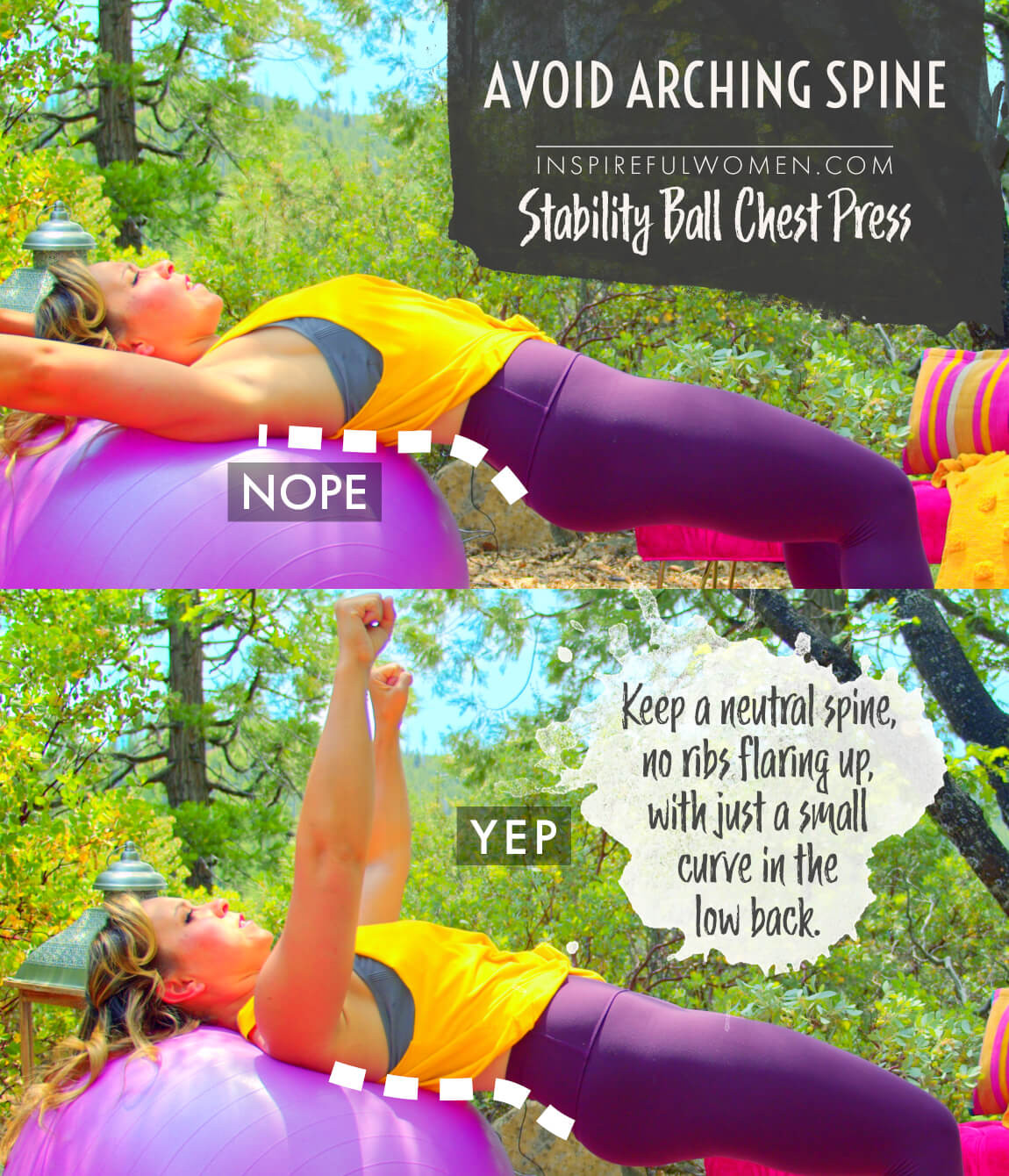
2. Avoid Bending Wrists
AVOID: Bending at your wrists.
WHY NOT?
- Poor alignment (bent forward or backward) or repetitive movement through the wrist can lead to joint and/or soft tissue irritation or injury over time.
WHAT TO DO:
- Your wrists should be in line with your forearm and should be still throughout the exercise.
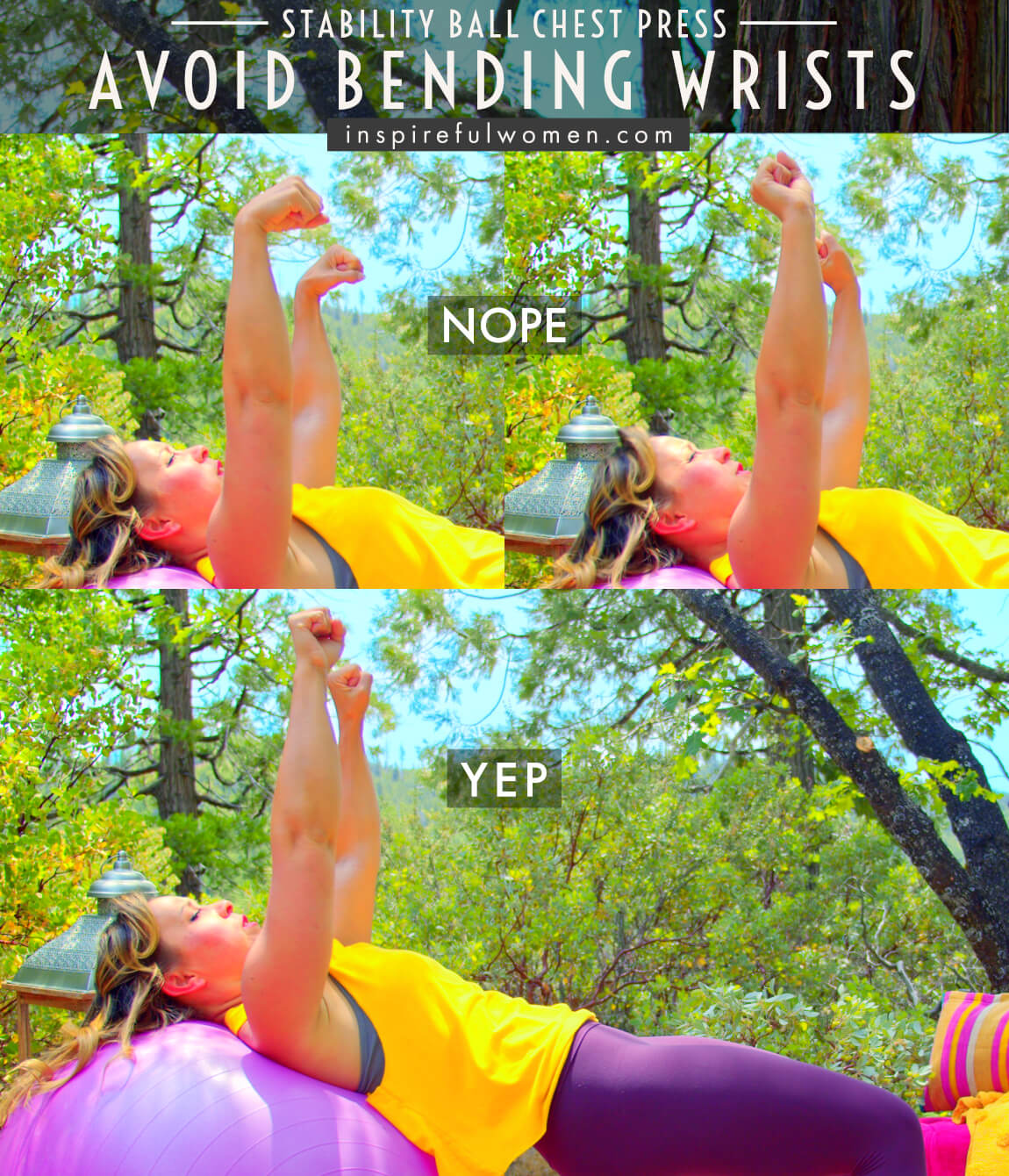
3. Avoid Flattening Low Back
AVOID: Flattening your low back.
WHY NOT?
- Maintain a neutral spine position to prevent injury or muscle strain.
WHAT TO DO:
- You should not be able to feel your low back pressed onto the floor, you should be able to slip your hand between the floor and your lower back.
- This can happen when:
- Your upper body is not providing a stable base for your arms to work off of: pull the shoulder blades down and back.
- Low back is trying to stabilize the torso: Make sure your feet are flat on the floor to help stabilize the torso.

4. Avoid Hunching Shoulders
AVOID: Hunching the shoulders up towards the ears.
WHAT TO DO:
- Keep the space between the ear and the shoulder during the entire rep - this opens up the shoulder to avoid tendon irritation and decreases the activity of the upper traps.
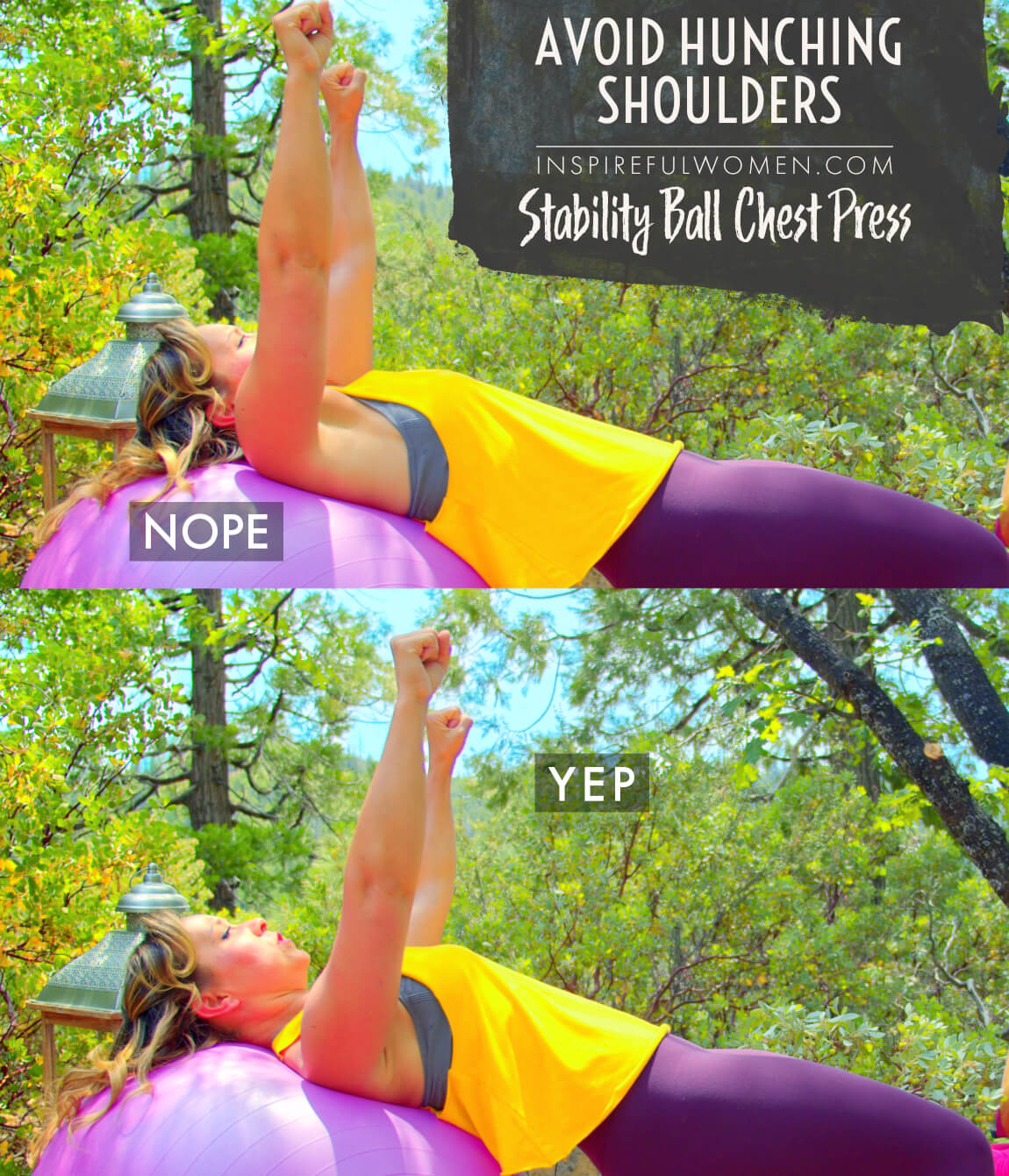
5. Avoid Lifting Neck Off Ball
AVOID: Lifting your head off of the ball.
WHY NOT:
- This can result in straining the neck muscles.
WHAT TO DO:
- Make sure the weight of your head is supported by the ball and your neck is relaxed.
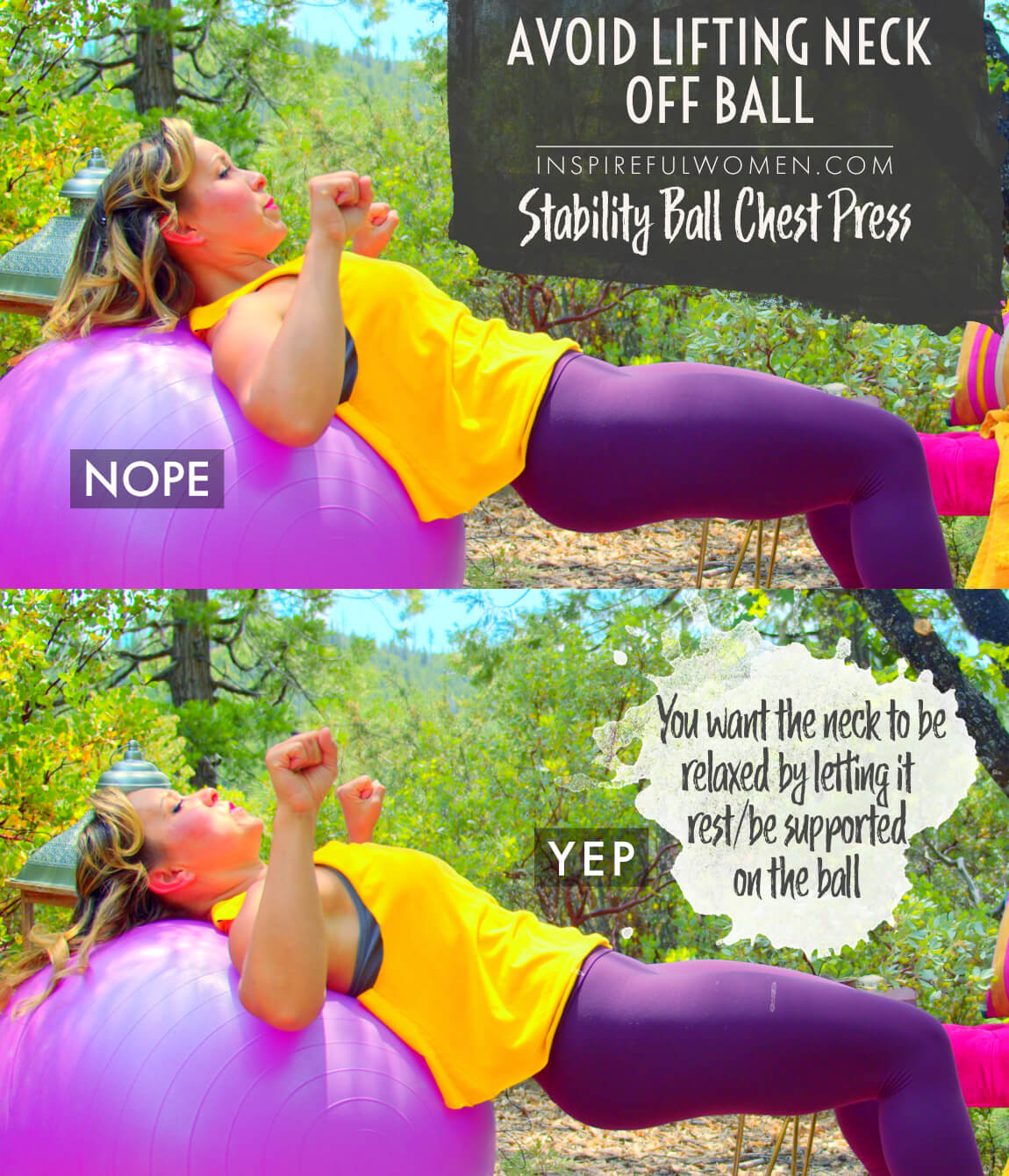
6. Avoid Locking Elbows
AVOID: Locking the elbows when the arms are out straight.
WHY NOT?
- This puts too much force through the joint and may result in long-term damage over time.
- Decreases the muscle activity of the arms.
WHAT TO DO:
- Keep the elbows slightly bent, even at the end of the movement.
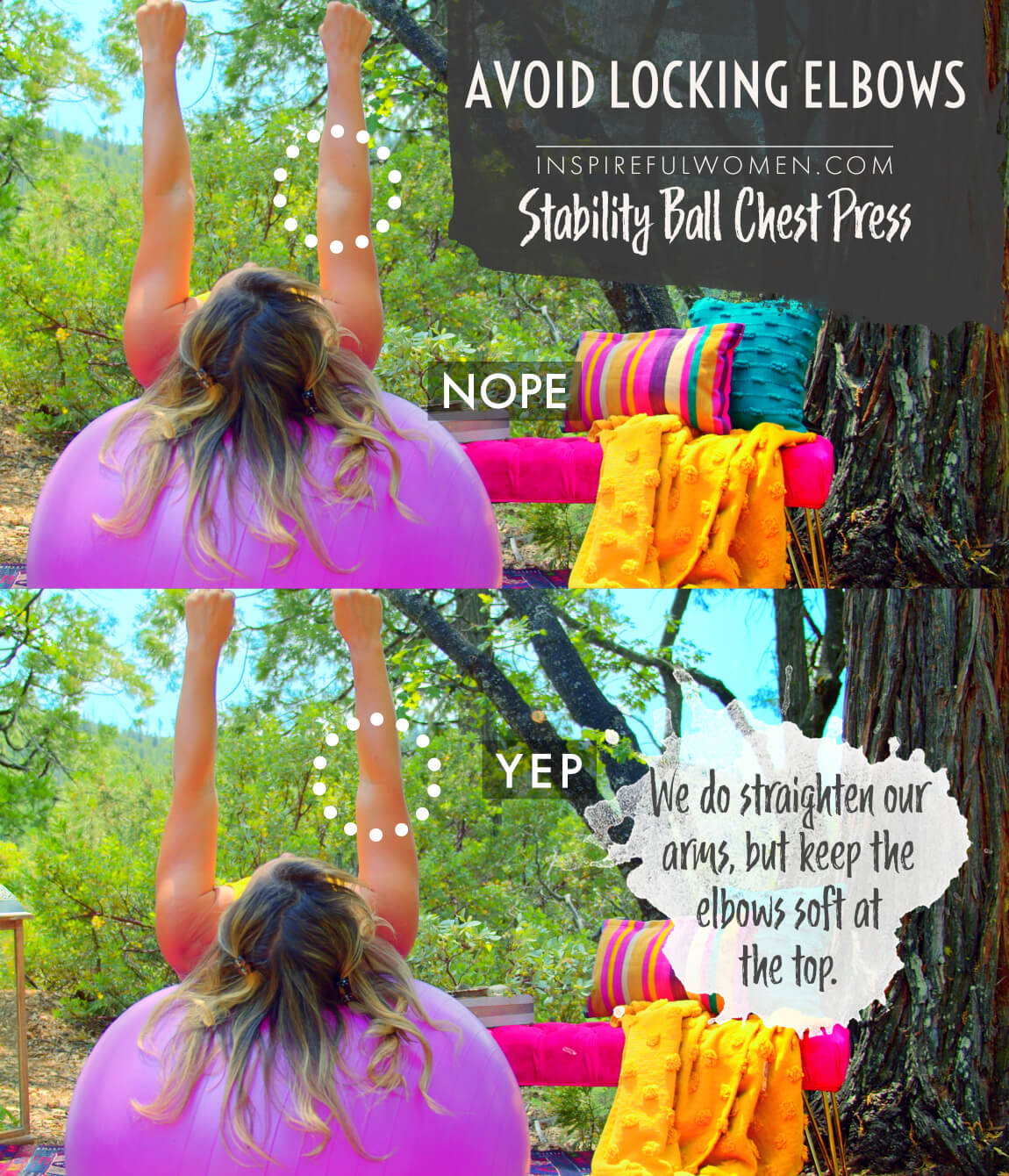
7. Avoid Losing Alignment of Hand
AVOID: Rotating the hand forward or backward.
WHY NOT?
- This will put a torque (rotational force) on the shoulder joint.
- This will activate muscles other than the target muscles and will decrease the amount of chest muscle activation.
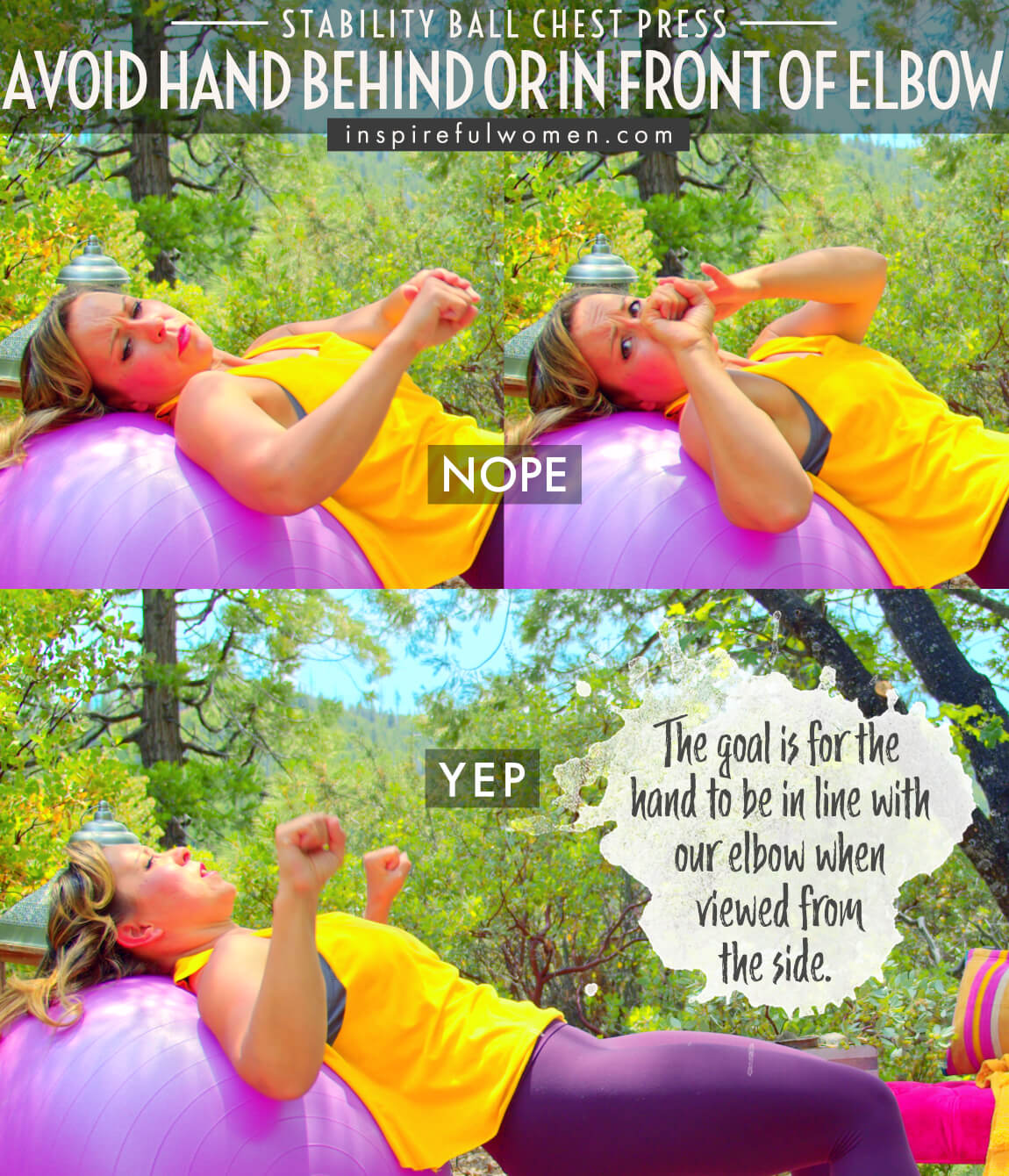
8. Avoid Lowering Weights Unsafely
AVOID: Sitting straight up with the weights on your chest (at the end of the sets).
WHY NOT:
- This can result in straining or injuring the low back.
WHAT TO DO:
- Move the weights down to the hip creases and then lower to the floor to set the weights down.
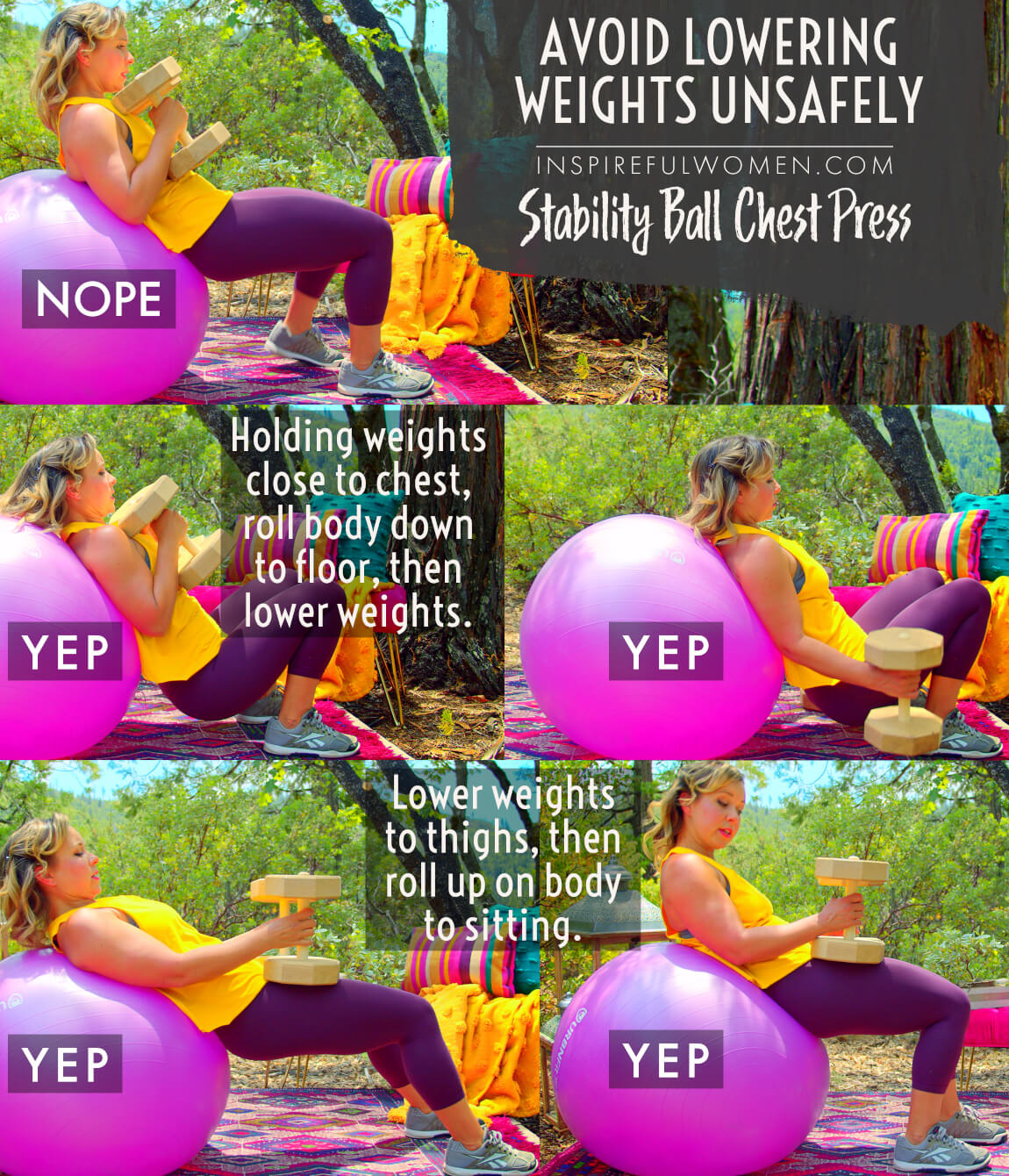
9. Avoid Shoulders Rounding Up
AVOID: Dropping your sternum and rounding your shoulders.
WHY NOT?
- This will cause you to use your anterior deltoids more and your pectoralis muscle less.
WHAT TO DO:
- Keep the sternum lifted, the chest wide.
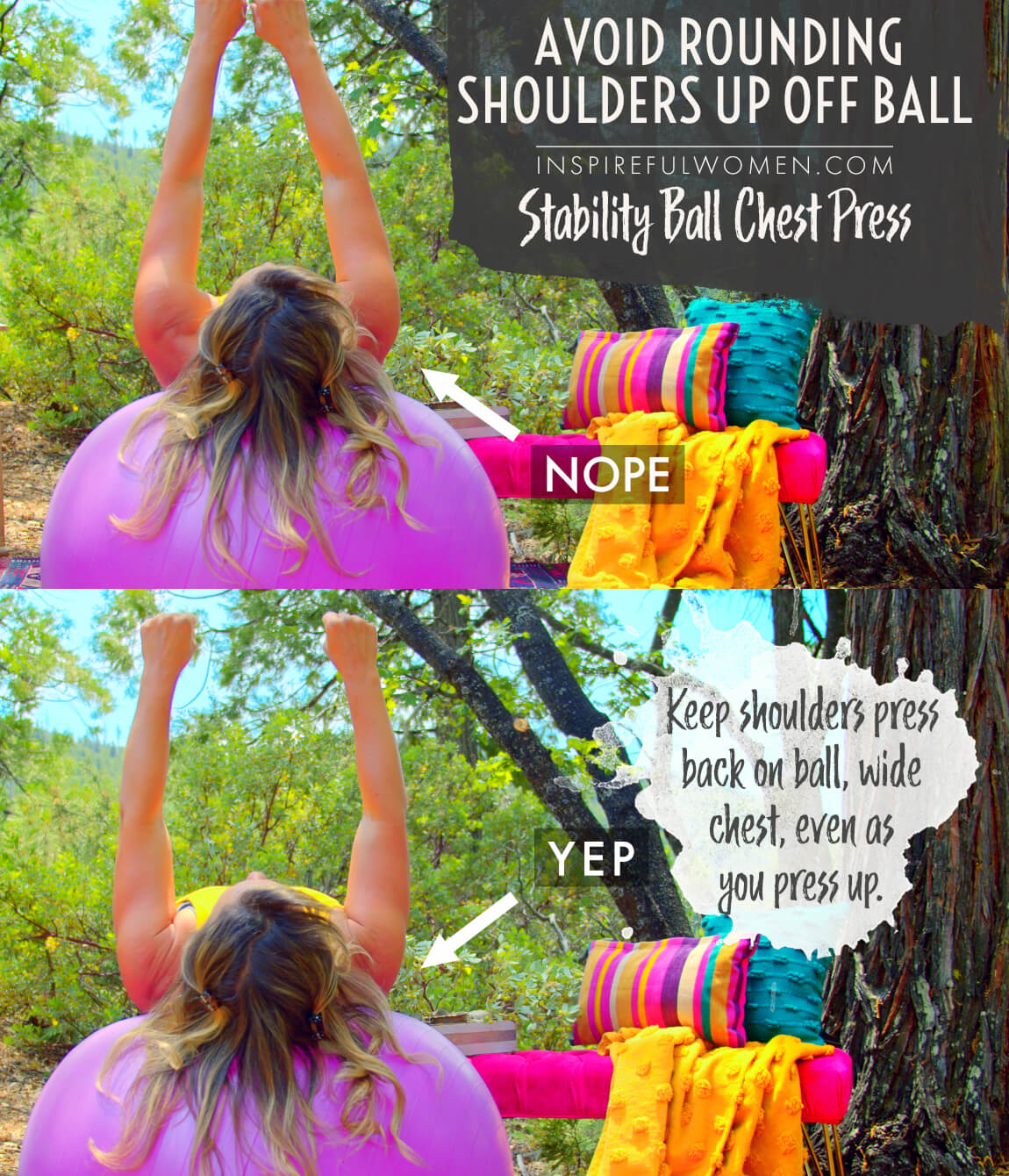
VARIATIONS
VARIATIONS
VARIATIONS OF Dumbbell Ball Chest Press
Inclined press
Incline Dumbbell Ball Chest Press
Once you are positioned on the ball - hinge at the hips and let the hips drop down towards the floor slightly. The head and upper back will remain supported. The ball will roll towards your feet a few inches. You can control the amount of the “incline” of the torso. The idea is that if you are pushing your arms up at a slight angle the upper fibers of the pectoralis major muscle will be working. You may need to roll forward on the ball a bit more than for the regular chest press in order to hinge your hips without your back running into the ball. As the arms press forward they will be angled up, the hands will be in front of the tops of your shoulders, as opposed to the mid chest level.
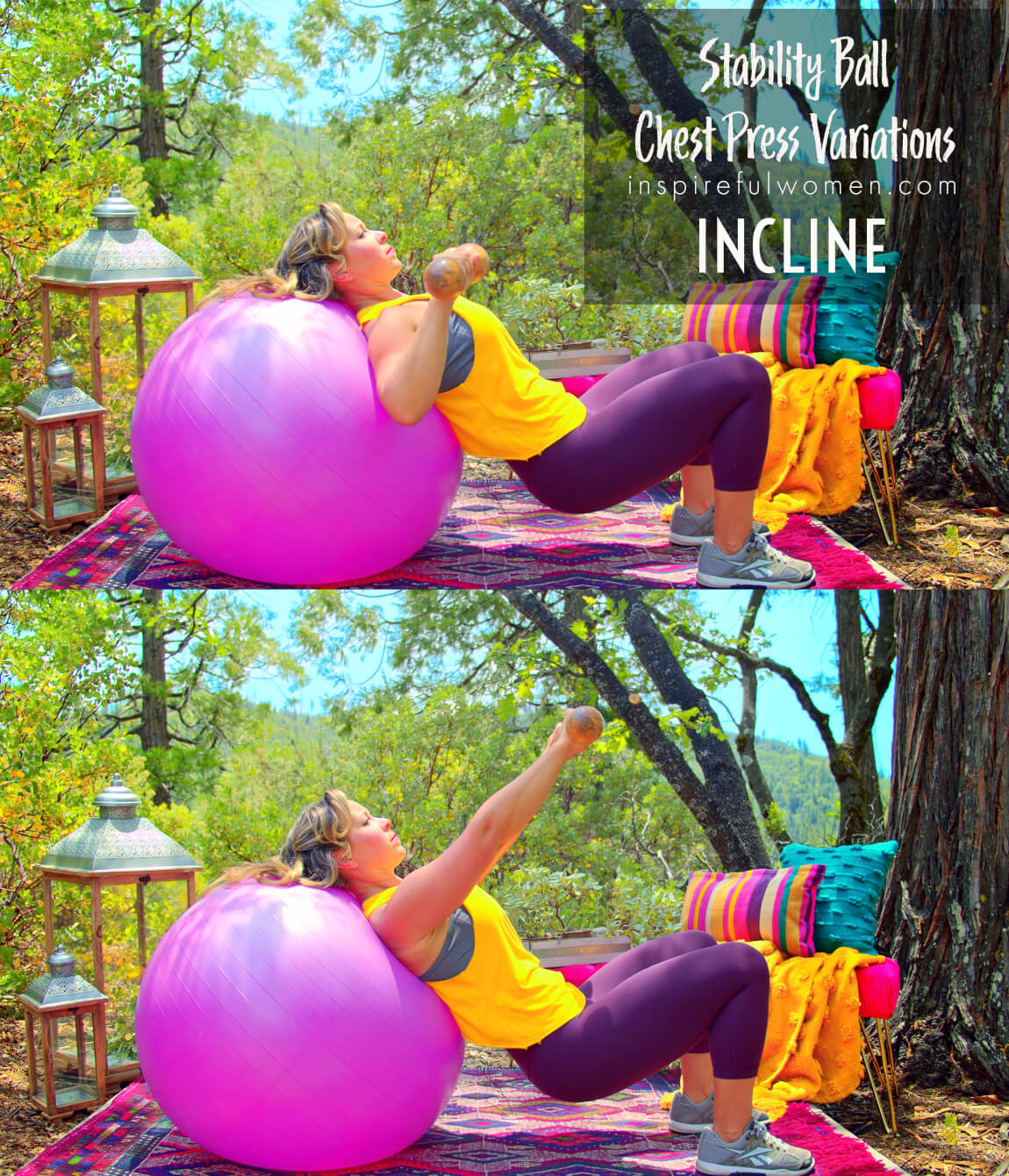
WHAT WE'RE DOING TODAY
WHAT & WHY
BENEFITS OF TRAINING THE Pectoralis Major
WHAT
This is a simple movement and one can often use heavier resistance, as long as the form is correct.
This exercise focuses on strengthening the muscles on the front of the chest. The pectoralis major is the large chest muscle, it covers a large area and is spread out like a fan. The shape of the muscle and where it attaches to, allows it to pull the arms in towards each other, lift them up and pull them down. The Chest Press exercises focus mainly on pulling the arms in towards the midline or breast bone. These exercises are done by pulling your upper arms in against resistance.
In Chest Presses the body is positioned on an elevated surface, like a bench, foam roll, or ball. This allows the elbows to drop down past the torso. When the elbows drop down, the pectoralis major muscle is active through a larger range of motion and is stretched before it is activated. Some believe that stretching the muscle just before activating it leads to greater strength gains.
Although it has benefits, the chest press should be done with caution. When the elbow drops down below the torso under a load (holding a dumbbell), it can put quite a bit of stretch on the connective tissue (anterior capsule) of the shoulder joint. Make sure that you listen to your body during the exercise and after the exercise. If you have discomfort, try lowering the weight you are using, a band instead of the dumbbells, or a floor press - which limits the range of motion.
WHY BOTHER DOING IT?
WHY
WHY DO WE EVEN CARE?
CAN HELP GIVE A LIFTED APPEARANCE TO THE BREASTS
I read this in several places. Things really started to go downhill or should I say, HANG, after breastfeeding my son at 29. Things were just never the same after that, sigh. Building muscle beneath the breast tissue can actually give a more lifted appearance to the breasts, who knew?? And all without expensive surgery. I think this is the case for me - I mean I still need the help of a supportive bra people, we're not talking miracles here, but I feel all the pushups I did in the past several years makes my whole upper chest area and into my shoulders, what you see when I wear say a scoop neck top, look firm and taut and healthy, which I think gives a more youthful appearance. So we don't need to shy away from chest exercises anymore!
HELPS WITH MANY ARM MOVEMENTS
The pectoralis major is basically THE chest muscle, it is large and broad, it can move the arm in, up, and pull it down when it is up. The pectoralis major helps to move and position the shoulder blade when the arm moves. This muscle is similar to the latissimus dorsi on the back of the body. It can help with a lot of different arms and shoulder blade movements, and to help stabilize the arm.
Its main function is bringing the arm in towards the middle of the body - towards the midline, for reaching across the body. You may not think that you use this muscle very much but if you start paying attention you will find that even little things like pushing a grocery cart, require you to hold your arm pulled in.
It is true that you rarely use this muscle for any powerful movements on its own, except maybe if you are a tennis player or flyfisher (which of course probably at least 75% of us are flyfishers right?? ;)), this muscle helps out all day long when you use your arms.
WORKING SEVERAL MUSCLES AT ONCE
Many exercises that work the chest work other important muscle groups as well like the triceps, shoulders, and biceps. This is great because you accomplish more in less time as well as......
BURN MORE CALORIES
The chest muscles are one of the larger sets of muscles on the body, and that combined with the fact that other muscles are also working like we just discussed, means training in this way can burn more calories and help build metabolism. So we can eat more. Which I'm sure I've said before is one of my main goals in life.
NOTE: DO CHEST OPENERS WITH THESE TO KEEP IT BALANCED.
The pectoralis major is frequently tight because of poor posture - sitting with a rounded upper back and forward rounded shoulders. Strengthening the chest muscles should be accompanied by some nice chest opening exercises, like rear deltoid exercises, or pec stretches. We don't want to exacerbate our already tight front right?
CHEST OPENER IDEAS:
Reaching behind your back with both arms and joining hands (holding the wrist of one arm, or clasping the hands work well)
Pulling the shoulders back and opening the chest, push the hands down and back - and holding for at least 20 seconds is an easy to do pectoralis major stretch that can be done after chest presses.
EVERYDAY LIFE
EVERYDAY LIFE &
MUSCLE FUNCTION
HOW WE USE OUR pectoralis major IN EVERYDAY LIFE
1. BRINGING THE ARM TOWARDS THE MIDLINE OF THE BODY (ADDUCTION)
- Reaching across to fasten a seat belt
- Lifting objects directly in front of the body with both hands
- Carrying heavy objects in front: grocery bag, child
- Picking up your pet chicken (other pets may qualify)
- Tennis forehand stroke
2. UPPER FIBERS BRING THE ARM UP AND ACROSS
- Touching the opposite ear - putting on an earring
- Using a blow dryer on the opposite side of the head as hand
3. LOWER FIBERS BRING THE ARM DOWN AND ACROSS
- Reaching the opposite hip
4. MEDIAL (INTERNAL) ROTATION OF THE ARM (ROTATING THE UPPER ARM INWARDS)
- Rotating arm down to empty a can (like that half can of garbanzo beans I left open in the fridge too long).
5. CAN HELP MOVE THE SHOULDER BLADE DOWN THE SPINE (DEPRESSION), DOWNWARD ROTATION, & MOVING FORWARD AROUND THE RIBCAGE (PROTRACTION), & STABILIZATION OF THE SHOULDER BLADE & SHOULDER JOINT
- Control during all arm and hand activities that require strength and/or precision - writing, knitting, using a screwdriver
HOW TO FEEL WHAT MUSCLE IS WORKING
How to Feel What Muscle is Working
Place your right hand over your left chest. Straighten your left arm and pull it in across your body. You should feel your pectoralis major muscle under your hand. Try pulling the arm across and up - you should feel the muscle activation close to your collarbone. Pull across and down and you should feel the lower part of the muscle contract.
SCIENCY STUFF
SCIENCY STUFF
SPIFFILICIOUS FACTS ABOUT MUSCLES & MOVES
The pectoralis major muscle is a large fan shaped muscle on the chest. It attaches to the collarbone, sternum (breast bone), the cartilage of the first 6 ribs, and the upper arm. The main function of the pectoralis muscle is to move and stabilize the upper arm. The upper fibers attach on the collarbone and the humerus - so when they contract the arms move into adduction and angles up. The middle fibers come from the middle ribs 1-4 ish and the sternum and the arm - so they pull the arm straight across, the lower fibers attach to the lower ribs and sternum and arms so they would pull in and slightly down. The heavier the load the more muscle fibers will be recruited. So if you reach across to your earlobe - mainly upper and mid fibers. But if you lift a heavy object to your ear, probably all portions of the pec major will be active but the upper will be most active.
The pectoralis major muscle is usually removed during a mastectomy or at least partially removed. The muscle is very similar to the lats, involved in a lot of different movements but any of the movements can be done by other muscles. Even if the muscle is removed, with time and exercise the functions of the pec can be done by other muscles.
ALLLL MUSCLES & WHEN
ALL MUSCLES WORKING & WHEN DURING THE Dumbbell
stability Ball Chest Press
The scapular retractors and depressors (mid and lower traps, rhomboids, lats, pecs (minor and major), subclavius, serratus anterior) become active during set up for the exercise. The hip extensors (gluteus maximus and hamstrings) will be working to hold the hips in neutral and to keep the pelvis lifted to maintain neutral spine positioning. The muscles of the legs work to stabilize the torso by providing a stable anchor- all of the muscles of the lower leg, thighs, and hips will assist to stabilize (how much is dependent on the amount of resistance used). The muscles of the torso (transversus abdominis, rectus abdominis, erector spinae, obliques, quadratus lumborum work to maintain a neutral spine position - how much they work will depend on how much resistance is used). The muscles of arms (upper - biceps, triceps, coracobrachialis, pecs, lats, teres major, rotator cuff, and forearm - [triceps and biceps], anconeus, radiobrachialis, brachialis, extensor, and flexor radial and carpal ulnaris, flexor and extensor digitorum profundus and superficialis, pronator teres, supinator - possibly others, but their contribution is minimal) work to stabilize the wrist, elbow and shoulder joints.
The pectoralis major is the prime mover, acting concentrically to pull the upper arm inward towards the midline. The anterior deltoid and coracobrachialis can contribute to this movement - how much they contribute is affected by how much resistance is being used. The triceps and anconeus work to straighten the elbow as the hand pushes upwards towards the ceiling. As the weight is pressed up, the hip extensors (gluteus maximus and hamstrings will contract to actively press down into the floor to provide more stability and allow the upper body to press more weight.
The triceps, pectoralis major work eccentrically to control the return to the starting position.
PIN IT FOR LATER!
